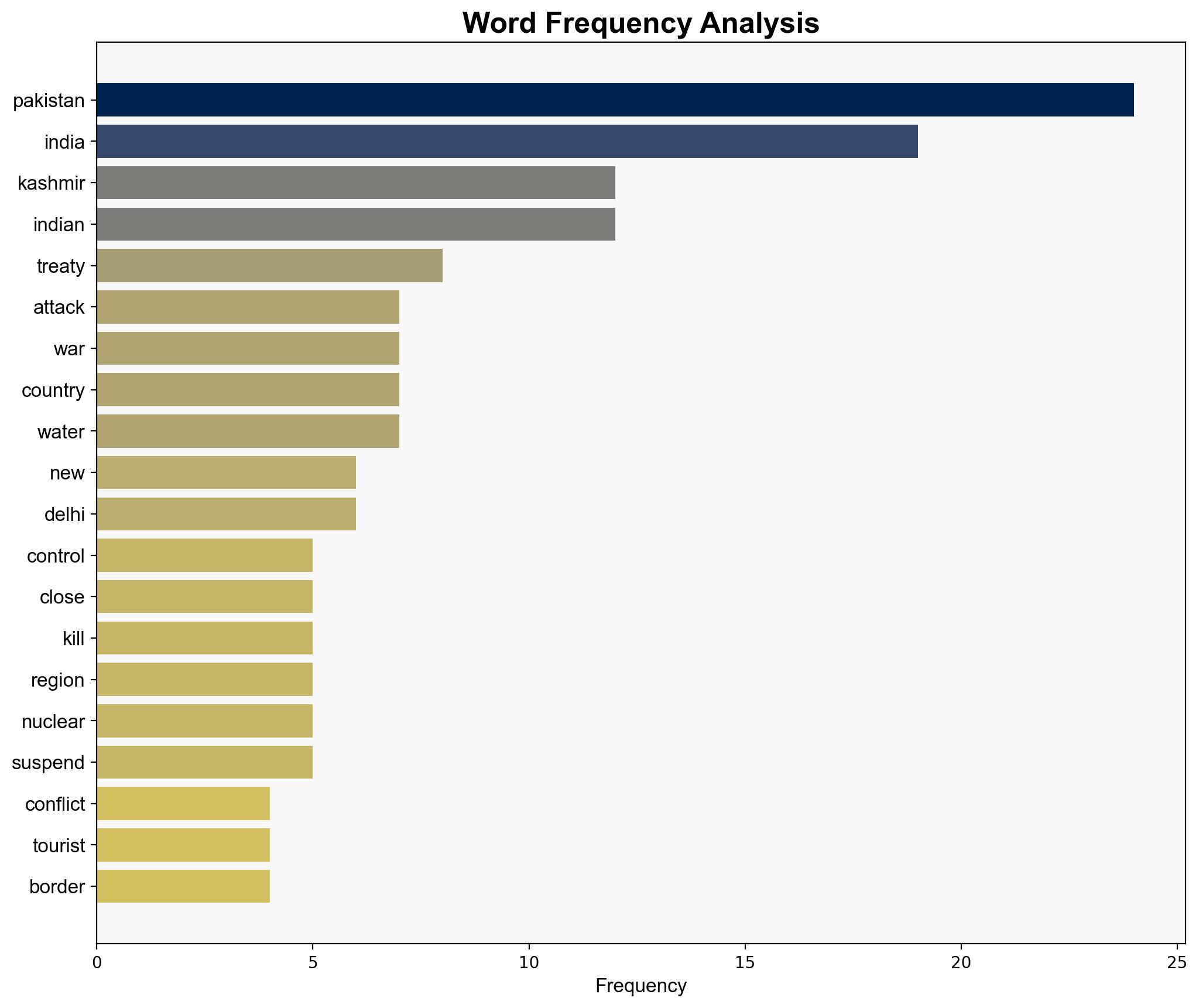India and Pakistan again teeter on the brink of conflict over Kashmir Here’s why – ABC News
Published on: 2025-04-25
Intelligence Report: India and Pakistan again teeter on the brink of conflict over Kashmir Here’s why – ABC News
1. BLUF (Bottom Line Up Front)
The recent escalation in tensions between India and Pakistan over Kashmir has been triggered by a deadly attack on Indian tourists, claimed by a previously unknown militant group. This incident has led to a series of retaliatory measures by both nations, including downgrading diplomatic ties and suspending crucial treaties. The situation poses a significant risk of further conflict, potentially impacting regional stability and international relations. Immediate diplomatic engagement and conflict de-escalation measures are recommended to prevent further deterioration.
2. Detailed Analysis
The following structured analytic techniques have been applied to ensure methodological consistency:
SWOT Analysis
Strengths: Both nations possess significant military capabilities and established diplomatic channels.
Weaknesses: Persistent mutual distrust and historical grievances over Kashmir.
Opportunities: Potential for international mediation to facilitate dialogue and conflict resolution.
Threats: Risk of nuclear escalation and regional destabilization due to unresolved territorial disputes.
Cross-Impact Matrix
Key interdependent events include the impact of diplomatic downgrades on bilateral trade, the suspension of the Indus Water Treaty affecting resource management, and the potential for increased militant activities in Kashmir. These factors could create a feedback loop, exacerbating tensions and complicating conflict resolution efforts.
Scenario Generation
Possible scenarios include:
- Best Case: Successful diplomatic intervention leads to renewed dialogue and de-escalation of military posturing.
- Worst Case: Continued provocations result in military skirmishes, disrupting regional stability and international trade routes.
- Most Likely: Prolonged diplomatic standoff with intermittent border clashes and heightened military readiness.
3. Implications and Strategic Risks
The current situation poses significant risks, including potential military conflict, disruption of water resources, and increased militant activities. These factors could lead to broader regional instability, affecting global markets and international security dynamics. The nuclear capabilities of both nations amplify the stakes, necessitating urgent conflict prevention measures.
4. Recommendations and Outlook
- Engage in multilateral diplomatic efforts to mediate and de-escalate tensions.
- Encourage confidence-building measures, such as joint water management initiatives and dialogue forums.
- Monitor militant activities and enhance counter-terrorism cooperation to prevent further attacks.
- Scenario-based projections suggest prioritizing diplomatic channels to avoid worst-case outcomes.
5. Key Individuals and Entities
The report does not specify individuals by name due to the focus on broader strategic dynamics.
6. Thematic Tags
(‘national security threats, regional focus, conflict resolution, diplomatic relations’)




